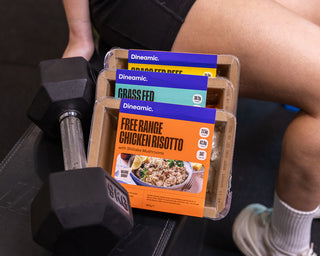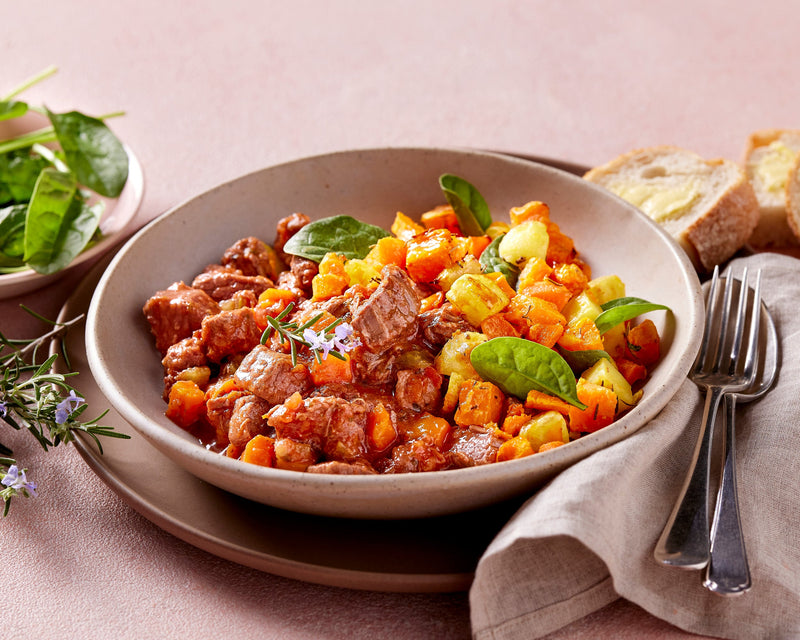You’ve probably heard people throw around words like macros and micros — maybe at the gym, maybe in a health article, or maybe this is your first rodeo. Either way, the big question is the same: what’s the difference, and why does it matter?
Before we dive into the split, let’s rewind to the basics. Nutrients are the building blocks of life. They fuel your body, repair your cells, and keep you ticking along day to day. A pretty huge job description, right? Luckily, there are six key nutrient groups up for the task: carbohydrates, proteins, fats, vitamins, minerals, and water. (And while alcohol does technically provide energy, sorry, it doesn’t make the “nutrient dream team.”)
So where do macros and micros come in? Nutritionists and dietitians group these six nutrients into two squads—and knowing the difference is the first step in understanding how food actually fuels you.
First up, what are macronutrients?
Think BIG! These guys are your major food groups carbohydrates, protein, fats and water. Our bodies need these in large amounts for energy. The quantity requirements of each macronutrient are unique to every individual due to dietary practice. You may have heard of people “counting their macros” when they’re on certain diets or particularly in the fitness world and each person may even tell you their breakdown is the best. But, there’s not necessarily a correct balance and the Australian Dietary Guidelines outlines a wide range of relative intakes of macronutrients that are acceptable. The current guidelines are:
Carbohydrates: 45-65% of an individual’s energy is recommended to come from carbohydrate, so, 225 - 325g. Carbohydrates provide 4 calories from 1g.
Protein: 15-25% of an individual’s energy is recommended to come from protein, which provides 4 calories from 1g protein. Depending on your age and sex the recomendatiosn in grams changes, please refer to the guidelines to find your exact amount.
Fat: 20-30% of an individual’s energy is recommended to come from fat, with no more than 10% from saturated fat, so, 45-75g. Fat provides 9 calories per 1g.
Water is the exception, with the recommended daily intake being 2.6L of water, read more about the importance of water in your day here.
Macronutrients contain micronutrients so the quality of our macronutrients is important, as some foods have better micronutrient profiles than others. This is why eating a variety of fresh fruit and vegetables, wholegrains, lean meats, good fats, and minimising processed food is so important for our health.
What are some examples of quality macronutrients?
Carbohydrates: oats, brown rice, quinoa, bananas, sweet potatoes, chickpeas
Proteins: eggs, liver, shellfish, yogurt, lentils, tofu, salmon
Fat: extra virgin olive oil, nuts, seeds, avocado oil, avocado
Second up but not second place, micronutrients!
Think small but essential, mirconutrients may only be needed in small quantities compared to macronutrients, but they have huge and very complex roles within our bodies. Our bodies can make some micronutrients, but can't always produce enough to support bodily functions, so it’s important we get enough through our diet. However, there are some micronutrients that we can’t produce at all, so these are essential in our diet. Unlike macronutrients, micronutrients are hard to track and trace which is why you don’t hear people counting their micronutrients.
What roles do micronutrients have in our bodies?
We won’t deep dive into every role of each micronutrient, because we’d be here all day, but a few roles include growth, immune function, brain development, energy production, cell function, blood clotting, organ function, oxygen transport, digestion, and list goes on...
Essential micronutrients fall into two groups:
|
Vitamins |
Minerals |
|
Water Soluble: Vitamin C: broccoli, capsicum, pineapple, kiwifruit. Vitamin group B: - Thiamin: wholegrains, animals products, leafy greens. - Riboflavin: eggs, organ meat - Niacin: meat, mushrooms, brown rice - Biotin: eggs, seafood, beans, peas - Choline: cauliflower, broccoli, eggs, fish - Folate: leafy greens, milk, oysters, salmon - Pantothenic Acid: chicken, tuna, avocado - B6: milk, ricotta, tuna, eggs, beef - B12: animal products
Fat Soluble: Vitamin A: carrots, liver, sweet potato, spinach Vitamin K: kale, broccoli, spinach, cabbage Vitamin E: sunflower seeds, almonds, avocado Vitamin D: eggs, oily fish, red meat, liver
|
Microminerals: Calcium: dairy products, sardines, dark leafy greens, soybeans Phosphorus: animal products, nuts, wholegrains Magnesium: greens, nuts, seed, oats Sodium: anchovies, cheese, olives, prawns Chloride: seaweed, tomatoes, celery, olives Potassium: bananas, potatoes, mushrooms Trace minerals: Iron: red meat, dark greens, mushrooms Manganese: wholegrains, shellfish, coffee Copper: oysters, spirulina, dark chocolate Zinc: chicken, eggs, seafood, beans, lentils Iodine: seaweed, cod, dairy, tuna Fluoride: spinach, grapes, black tea Selenium: meat, beans, lentils, soy Molybdenum: legumes, nuts, dairy , meat Chromium: eggs, chicken, nuts, beans, peas
|
You can find a breakdown of your macro and micronutrients on the Nutritional Panels on your food products, so you have full visibility of what's really in your food. It's recommended to read the ingredients and Nutritional Panel when you're choosing food products, so you can make conscious choices of what you’re putting in your body.









